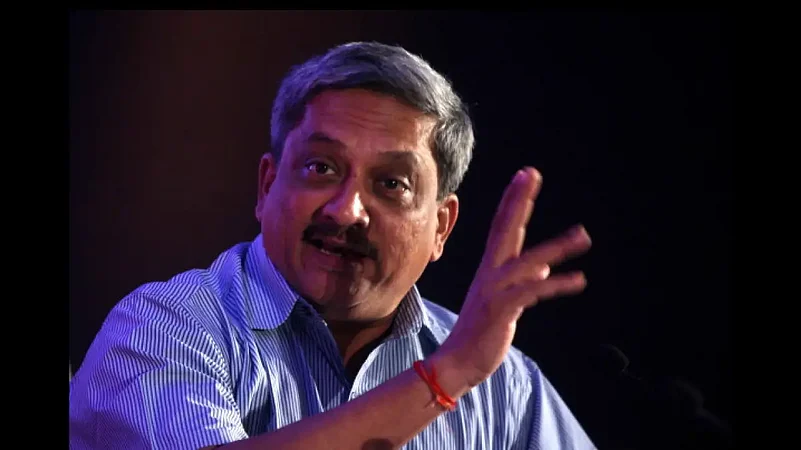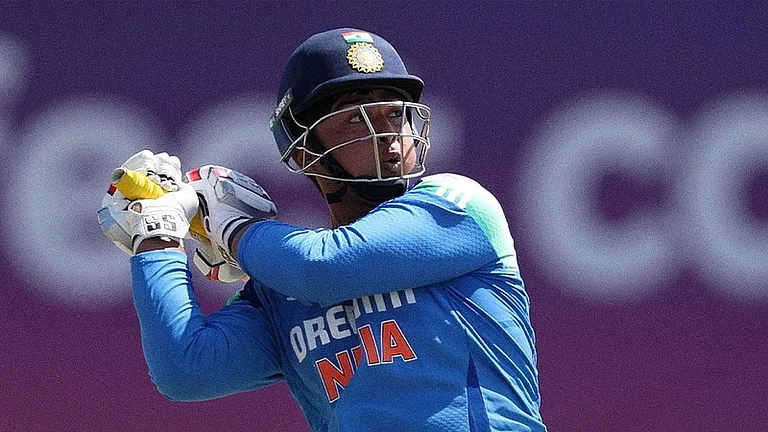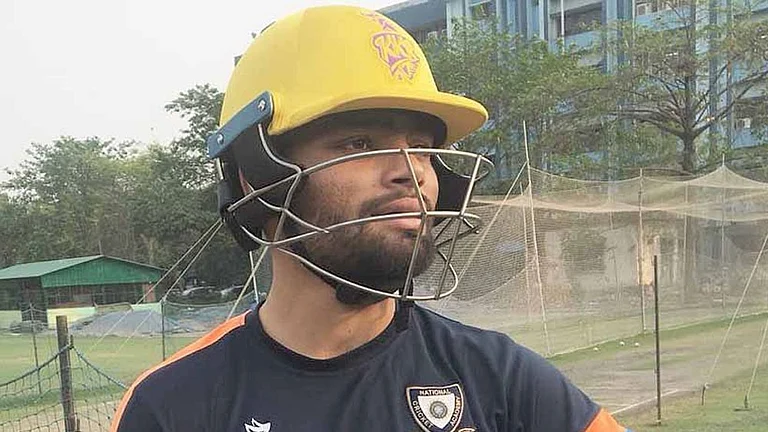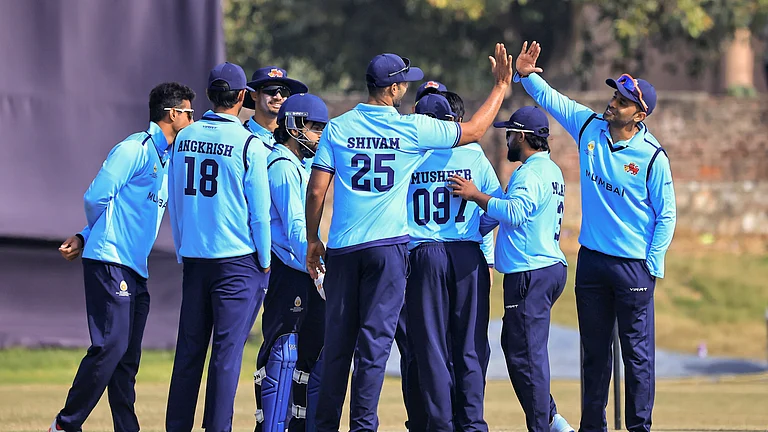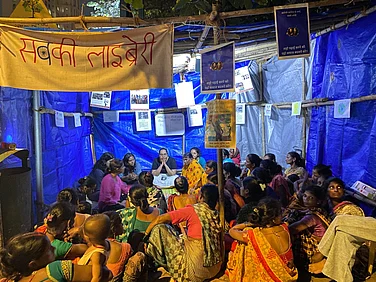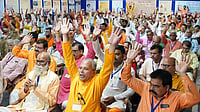The change of political guard in Goa after the death of then Chief Minister Manohar Parrikar wasn’t expected to be an easy one. Parrikar was synonymous with the BJP as well as Goa’s politics. But one purge of the Parrikar faithful from positions of power and a well-oiled party organisation ensured that Parrikar’s successor Dr. Pramod Sawant’s ride was a relatively smooth one.
‘Legacy’, the last chapter of An Extraordinary Life, Parrikar’s biography published by Penguin Random House India and authored by Sadguru Patil and Mayabhushan Nagvenkar, sums up the former Defence Minister’s political innings as well as Goa’s transition into the Pramod Sawant era.
‘You stick your finger in the water and you pull it out, and that is how much of a hole you leave when you’re gone.’
That’s a line from The Daybreakers, a novel written by one of the most prolific Western writers of all times, Louis L’Amour, which tries to put in context the legacyof a man once he’s gone.
In Goa, not too many expected Manohar Gopalkrishna Prabhu Parrikar to die, even after his actual death on 17 March. The writ of the former defence minister and four-term chief minister of India’s smallest state ran large over the psyche of his people. A writ that appeared incapable of being erased. When he was alive, he appeared indispensable, invincible, indefatigable, invulnerable, omnipresent, omnipotent, all rolled into one. In Goa BJP, he was the alpha.
Considering the manner in which the affairs of the state and its 1.5 million people were held hostage by his prolonged illness for over a year, it seemed that his death would create a void big enough to suck in the vitality of not just the state BJP, but the whole of Goa itself. The hole was expected to take a while to fill, considering his gargantuan personality.
However, none of this happened.
On the contrary, in the months that followed his death, Parrikar’s favourite knights, the men whom he placed immense faith in as the chief minister and defence minister, appeared to have fallen like dominos from positions of power.
The list of casualties in Goa’s post-Parrikar era began with his son Utpal, who was first propped up as his father’s replacement for the Panaji assembly by-polls soon after his death, before being unceremoniously dropped from contention. Utpal’s father-in-law Dr Mahesh Sardesai’s contract as head of the radiology department at the state government-run Goa Medical College was also terminated abruptly four months after Parrikar’s death. Sardesai’s services had earlier been extended on a contract basis and renewed on numerous occasions, after his formal retirement.
Parrikar’s favourite legal eagle and a close aide for all seasons, Additional Solicitor General Atmaram Nadkarni, was stripped of his legal briefs by the Goa government, while Advocate General Dattaprasad Lawande, another appointee from the Parrikar era, was also replaced. Among other Parrikar appointees who were replaced in the purge during the regime of BJP Chief Minister Pramod Sawant were Rajendra Talak and Santosh Kenkre, vice chairpersons of the Entertainment Society of Goa and the Economic Development Corporation, respectively. Two cabinet ministers, Rohan Khaunte and Vijai Sardesai, who had extended their support to the BJP during the government-formation process in 2017, to Parrikar’s appointment as CM, were also sacked from Sawant’s cabinet, indicating the systematic dismantling of the Parrikar coterie from their respective perches.
Even Parrikar’s mugshot, which had been a constant feature on the party’s banners since the 1990s, went missing from the publicity paraphernalia during a membership drive held soon after his death. The Sawant administration is currently in the process of carrying out a massive overhaul of Parrikar’s landmark Cyberage scheme, by doing away with the practice of awarding free tablets and PCs to students, citing misuse of the devices.
What is most interesting is, almost all those ousted in the coup belong to the Gaud Saraswat Brahmin caste, a grouping that Parrikar belonged to and had strategically backed throughout his regime.
The bloodless coup against the GSBs, who were largely linked to government privilege in successive past regimes, is being viewed with pleasant curiosity by the people at large. But some, including those in the saffron party, are now accusing the ‘new BJP’ of trying to wipe out Parrikar’s legacy.
‘Why is the Saraswat community being targeted? Maybe, I am the first person to bring it out so openly. I don’t know what action the BJP will take against me, but I am proud to be a Saraswat [. . .] I don’t know who is doing it. But these are too many coincidences, which are rolling out one after the other,’ a former Goa BJP national executive member, Pandurang Naik, also a GSB, told one of the authors.
Vijai Sardesai preferred to call the cull an ethnic cleansing, claiming it is a phrase coined by the BJP cadre. ‘There is some sort of ethnic cleansing happening; that is what the BJP cadres are saying now and believing [. . .] I don’t want to sound alarmist, but that is what the BJP cadre are saying. That a particular section of society is being targeted by this dispensation. Please make a note of this point that these are not my words. This is what the BJP cadre is saying [. . .]’ he told Rediff in an interview in July 2019.
In light of the developments, Utpal Parrikar himself expressed concern about the BJP deviating from the path that had been carved by his father through the years.
‘The path of trust that Parrikar established in his politics ended on 17 March,’ Utpal told one of the authors after Khaunte and Sardesai were sacked from the Parrikar cabinet.
Even the site near the Miramar beach where Parrikar’s mortal remains were cremated and has been identified for constructing a memorial dedicated to the late chief minister became an object of contention. The two sacked GSB ministers, Khaunte and Sardesai, strategically chose the site to launch a scathing critique on the BJP-led coalition government, accusing it of trying to destroy Parrikar’s legacy.
These developments that occurred at breakneck speed after Parrikar’s death, lend beef to the theory that there is a conscious sociopolitical course correction in the thought process of the BJP in Goa. The party appears to have adopted a new strategy, as per which appointment of non-Brahmins to key positions of power could help do away with the impression that was gaining increasing acceptability in the later phase of Parrikar’s leadership, that the BJP was pro-Brahmin in its disposition. The purge could also help establish the new chief minister as his own man and project his own personality on the party, as against appearing to be dwarfed in comparison to his illustrious predecessor.
But the BJP’s sudden departure from its Parrikar obsession may also have stemmed from another reason.
There was a surge of thousands who rushed to Panaji to get a last glimpse of the departed leader on the day of Parrikar’s cremation. It was one of the largest public funerals Goa had ever seen. But with Lok Sabha elections around the corner, the party tried to borrow a leaf from the national unit of the BJP. After former prime minister Atal Bihari Vajpayee’s death on 16 August 2018, the party had launched a countrywide campaign for the ceremonial immersion of his ashes across 100 major rivers of India. Parrikar’s ashes were similarly parcelled out in urns, which were paraded in all constituencies and later ceremoniously immersed in the various rivers across the state, perhaps with an eye on drumming up emotive support ahead of the polls. But the move turned out to be a damp squib, with the exercise failing to attract any popular traction, a fact that unsettled the poll-bound Goa BJP.
But it is still early days in the post-Parrikar era.
Prime Minister Narendra Modi’s tribute to Parrikar, when he was still battling the deadly disease, describing the Goa chief minister as the ‘architect of modern Goa’, rings true as far as some infrastructure projects are concerned. The third 5.1-km-long cable stayed bridge across the Mandovi River named ‘Atal Setu’, after Vajpayee, was conceived and completed by Parrikar, despite the Opposition terming it superfluous and its construction being mired in graft-related controversies.
His multiple reigns also witnessed the construction of numerous bridges throughout the state, including a crucial bridge across the Zuari River in south Goa. So obsessed was Parrikar with building bridges in Goa’s mountainous and riverridden terrain, that his former critic and later a cabinet minister, Vijai Sardesai, likened him to Jesus Christ, because of his ability to build bridges, both literally and figuratively.
‘In the Bible, there is a saying that man should build bridges, not walls. Jesus built bridges, not walls [. . .] Manohar Parrikar also built bridges. We were also on the other side. We came to this side because of the bridges he built [. . .] Parrikar built bridges with people who are positive,’ Sardesai told the state legislative assembly in January 2019.
Parrikar’s path-breaking and popular social-welfare schemes, involving universal mediclaim, pension for senior citizens and allotment of free personal computers and later laptops and tablets to school students, helped to not just bolster his image as a different kind of leader, but also helped the BJP gain traction in the state.
His drive in his first two stints as the chief minister—during which he executed several infrastructure projects, including the construction of a multiplex to host the IFFI, in a matter of months—was a credit to his dogged ability to get things done.
He even defied the numerical caste odds to become the state’s first GSB chief minister. While the elite Brahmin sub-caste by virtue of its financial and social clout have remote-controlled the offices of various chief ministers in the past, in Parrikar, the numerically minuscule GSB community had its very own chief minister who subtly, but actively, ensured that its interests were not just protected, but also flourished at any cost.
Bucking a recent trend in Goa’s politics, like it is elsewhere in India, Parrikar consciously kept away from the slur of nepotism, keeping his sons as well as his politically ambitious nephew, Akhil, son of his younger brother, Suresh, from grabbing a meaty role in state politics.
By virtue of rank, Parrikar became the state’s tallest politician ever, with his appointment as defence minister in 2014. Veteran Goan politicians like Ramakant Khalap of the MGP, Eduardo Faleiro from the Congress and BJP’s Shripad Naik have served as Union ministers of state, but none could pass the vertical barrier to become a full-fledged cabinet minister.
As defence minister, he emerged as the cornerstone of Modi’s efforts to resolve the One Rank One Pension conundrum and attempted to introduce the ‘Make in India’ initiative in the defence sector. Parrikar was also party to the decision-making process that led to the twin surgical strikes on India’s eastern and western borders, although he will also be remembered for his more than frequent trips to Goa and open meddling in state affairs. He was in Goa when the Pathankot army base was attacked by Pakistan-backed terrorists, which eventually resulted in the counter surgical strikes at Uri.
Parrikar’s stock took a beating when he was in Goa once again, inaugurating a government-subsidized fish counter, while the prime minister struck the Rs 59,000 crore deal with his French counterpart to purchase Rafale fighter planes. Parrikar was also dragged into the graft controversy linked to the deal, at a time when his health was already waning.
But in the ultimate analysis, it would be appropriate to describe Parrikar as a charismatic leader, who fell drastically short of fulfilling the destiny of a state and its people, despite his potential. Or perhaps he just ended up walking the familiar path of history’s starry-eyed revolutionaries, who stormed corrupt and decadent bastions of power, only to end up carving out similar citadels of political sleaze for themselves.
In 2012, for example, when a Supreme Court ban put an end to the loot and the unbridled control of the state’s rapacious mining lobby, which was exposed in a Rs 35,000 crore ore extraction and export scam, Parrikar had the golden opportunity to rewrite the state’s social and economic destiny. But instead of streamlining the sector and ensuring action against the perpetrators of Goa’s biggest ever corruption scandal, Parrikar preferred to play the average politician pandering to the same lobby and actively covered up their criminal follies. Together with his inglorious succumbing to the casino industry and his proximity to casino honchos, after riding to power in 2012 on an anti-casino industry plank, these were the two biggest self-inflicted salvos on his perception as a clean, honest and transparent administrator.
Parrikar’s politically motivated letter to the hopeful Karnataka BJP CM B.S. Yeddyurappa ahead of the 2018 assembly polls in the southern state, offering to consider the state’s demand for drinking water on ‘humanitarian grounds’ has put Goa on the back foot visà-vis its two-decade long inter-state dispute over the waters of the Mhadei River.
His style of governance itself, which shied away from building people-friendly administrative systems and delegating of responsibilities and instead retained power in his own self or a small coterie of upper-caste satraps, also significantly chipped away at his reputation. Parrikar’s transformation from a dynamic anti-corruption crusader who went after tainted politicians with a vengeance, to later hugging the same netas and defending their alleged acts of corruption when in power also stunted his chances of being reckoned a statesman.
Parrikar’s name did feature posthumously in the list of Padma awardees announced in 2020. While the former union finance minister, Arun Jaitley, and the former union external affairs minister, Sushma Swaraj, were awarded the Padma Vibhushan Award, Parrikar was conferred with the Padma Bhushan Award.
But, one of Goa’s biggest casualties in the Parrikar era has been the story of the rise and fall of hope. In the political morass of Goa, India’s smallest state, but one with arguably the highest levels of political skulduggery, Parrikar had emerged as one of the biggest carriers of hope for the people. To be fair, he appeared to have the résumé, the intellect and the ability to elevate Goa as one of the top Indian states, as far as public delivery systems, administrative innovation and social indices were concerned. In 2012, with twenty-one BJP MLAs elected to the forty-member state legislative assembly, he even had the mandate to convert the promise into delivery.
But Parrikar chose to fritter away the opportunity and his shot at real greatness.
(Excerpted from An Extraordinary Life: A Biography of Manohar Parrikar by Sadguru Patil and Mayabhushan Nagvenkar, with permission from Penguin Random House)
(Sadguru Patil has been working for various Marathi newspapers since 1995. He has covered politics extensively and all major political developments in Goa in that period. Mayabhushan Nagvenkar is the Goa correspondent for the Indo-Asian News Service.)







